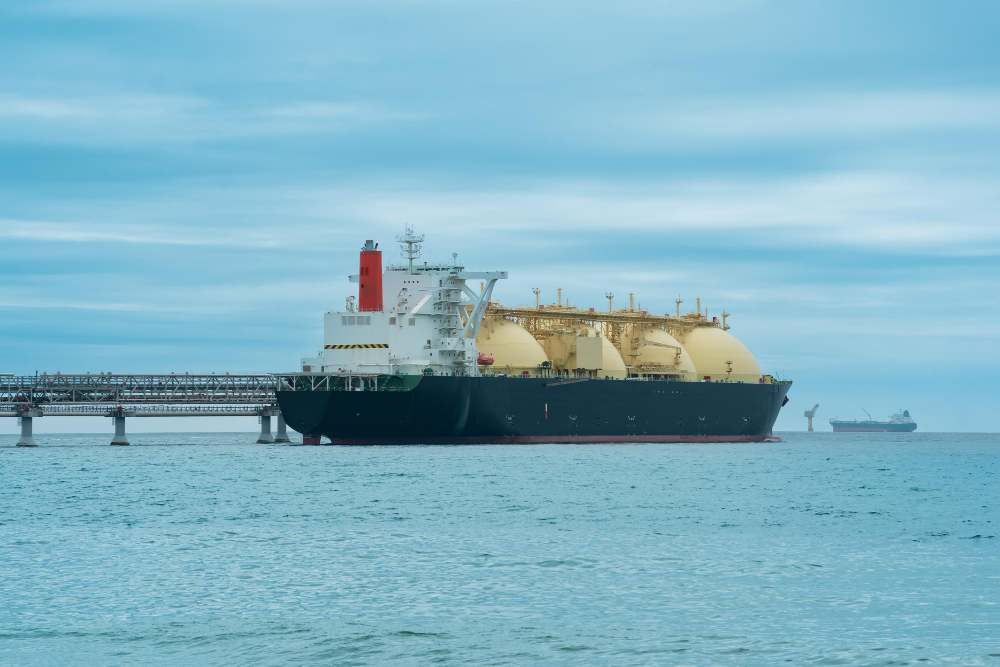
A Fleet Fit for Every Port: Exploring the Diverse World of LNG Vessel Types
Liquefied Natural Gas (LNG) has emerged as a critical player in the global energy landscape. Transporting this super-cooled gas across vast distances, however, requires a specialized fleet of vessels, each designed for a specific purpose. This article delves into the fascinating world of LNG vessel types, exploring their unique characteristics and the diverse roles they play in the LNG supply chain.
From Compact Coasters to Ocean Giants: A Spectrum of LNG Vessel Sizes
LNG vessels come in a variety of sizes, catering to different transportation needs. Here’s a breakdown of the key categories:
- Small Scale LNG Carriers (SSL Carriers): These compact vessels typically have cargo capacities ranging from 5,000 to 25,000 cubic meters. SSL carriers are ideal for short-distance transportation within coastal regions or serving island nations with limited infrastructure for larger vessels.
- Medium Scale LNG Carriers (MSL Carriers): Offering cargo capacities between 25,000 and 50,000 cubic meters, MSL carriers bridge the gap between SSL carriers and larger vessels. They can navigate inland waterways and smaller ports, providing flexibility in the LNG supply chain.
- Conventional LNG Carriers: These form the backbone of the global LNG fleet, with cargo capacities ranging from 150,000 to 266,000 cubic meters. They are designed for long-distance oceanic voyages and transport the bulk of LNG traded internationally.
- Floating Storage and Regasification Units (FSRUs): While not strictly carriers, FSRUs play a vital role in the LNG supply chain. These specialized vessels can store LNG and regasify it on-board, providing a flexible source of natural gas for regions lacking permanent regasification terminals.
The choice of vessel type depends on several factors, including:
- Distance of the voyage: Larger vessels are more economical for long-distance transportation.
- Port infrastructure: Smaller vessels are better suited for ports with limited capacity.
- Cargo volume: The cargo capacity of the vessel must be sufficient to meet the demand at the destination.
Beyond these broad categories, LNG vessels can be further differentiated based on their cargo containment system design. The most common configurations include:
- Moss type: These vessels feature spherical cargo tanks independent of the ship’s hull, offering flexibility in cargo expansion and contraction.
- Membrane type: These vessels utilize a membrane containment system within the hull, providing greater cargo capacity and lighter weight.
Each type of LNG vessel offers unique advantages and disadvantages that must be considered for optimal performance and efficiency within the LNG supply chain.
Beyond Size: Specialized Roles for Different LNG Vessels
The world of LNG vessels extends beyond just size and containment system design. Here’s a closer look at some specialized types designed for specific purposes:
- LNG Bunker Vessels: These vessels deliver LNG fuel directly to LNG-powered ships at sea, eliminating the need for bunkering at ports and facilitating the adoption of LNG as a cleaner marine fuel.
- LNG Re-liquefaction Vessels: These specialized vessels can re-liquefy boil-off gas (BOG) evaporated from conventional LNG carriers during voyages, maximizing cargo delivery and reducing waste.
- LNG Shuttle Tankers: These vessels operate in
Continued: Beyond Size: Specialized Roles for Different LNG Vessels (continued)
- LNG Shuttle Tankers: These vessels operate in close proximity to offshore LNG production facilities, transporting LNG over short distances to larger carriers for onward transportation.
The development of specialized LNG vessel types reflects the growing complexity and diversity of the global LNG market. These vessels ensure flexibility and efficiency across various segments of the LNG supply chain.
FAQs
- What are the safety considerations for different types of LNG vessels?
All LNG vessels are designed and operated with strict safety regulations in place. These regulations address fire prevention, cargo containment integrity, and spill response procedures. However, the specific safety measures may vary depending on the vessel size and cargo containment system design.
- What are the environmental benefits of using different types of LNG vessels?
LNG itself burns cleaner than traditional fossil fuels like coal or oil. Furthermore, vessels like LNG bunker vessels promote the adoption of LNG as a cleaner marine fuel, further reducing emissions from the shipping industry. Additionally, LNG re-liquefaction vessels minimize BOG emissions during transportation.
- What is the future of LNG vessel design?
The future of LNG vessel design is likely to focus on increased efficiency, reduced emissions, and improved safety. Innovations like optimized hull designs, advanced propulsion systems using LNG fuel, and further development of cargo containment systems are on the horizon.
- How does the cost of different LNG vessel types compare?
Generally, larger vessels have higher construction costs but offer economies of scale for long-distance transportation. Smaller vessels may have lower construction costs but may be less economical for long voyages. Specialized vessels like FSRUs may have higher costs due to their dual function of storage and regasification.
- What factors will influence the future demand for different types of LNG vessels?
The future demand for different LNG vessel types will be shaped by several factors. These include the growth of global LNG trade, the development of small-scale LNG infrastructure in emerging markets, and the adoption of LNG as a fuel source for the shipping industry.
As the global demand for LNG continues to grow, a diverse fleet of LNG vessels will play a critical role in ensuring the safe, efficient, and flexible transportation of this important clean-burning fuel across the world. Each vessel type, with its unique capabilities and design considerations, contributes to a complex and evolving global LNG supply chain.
